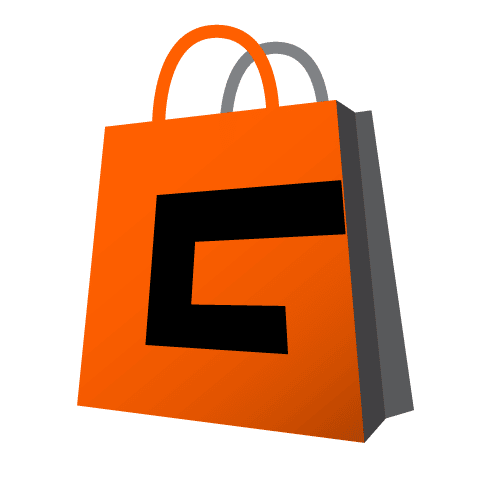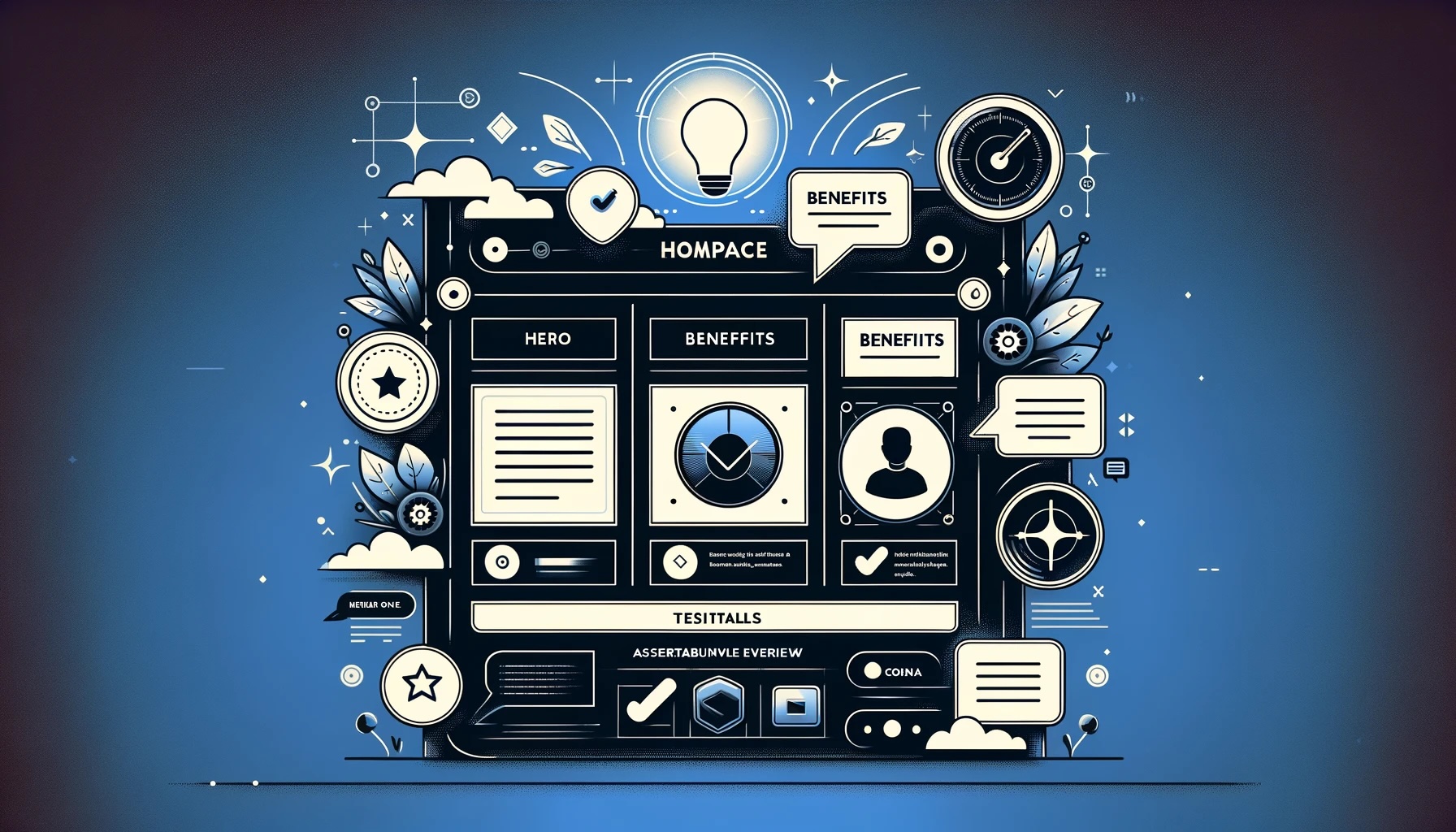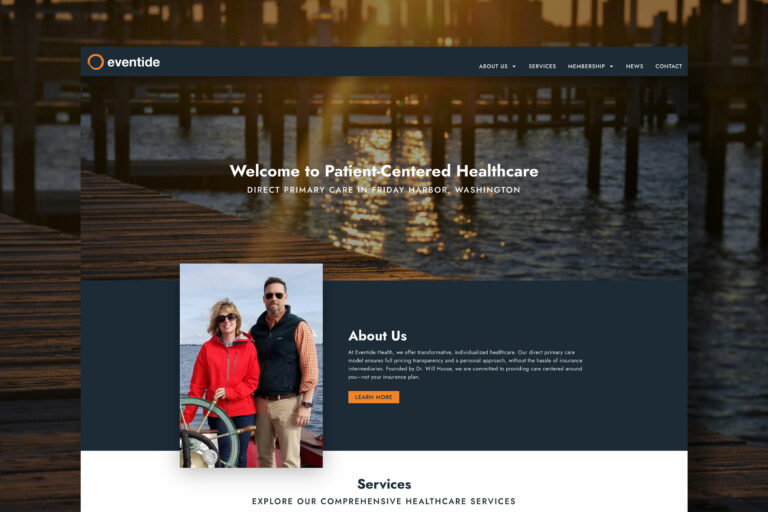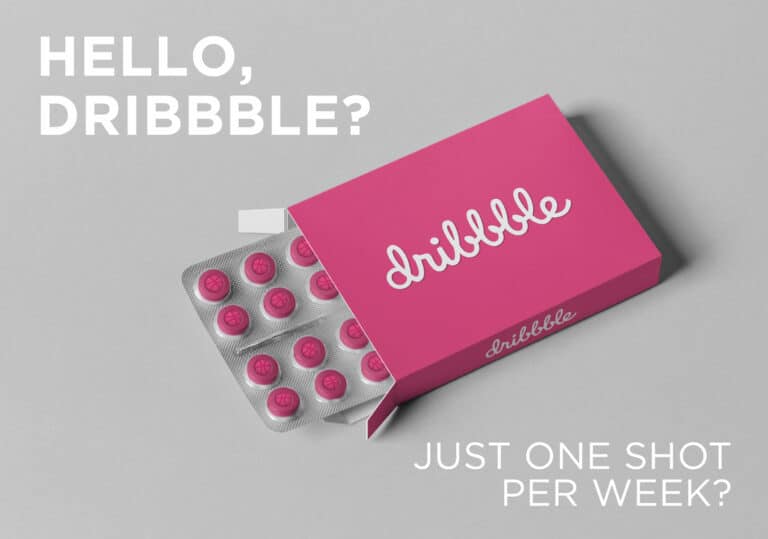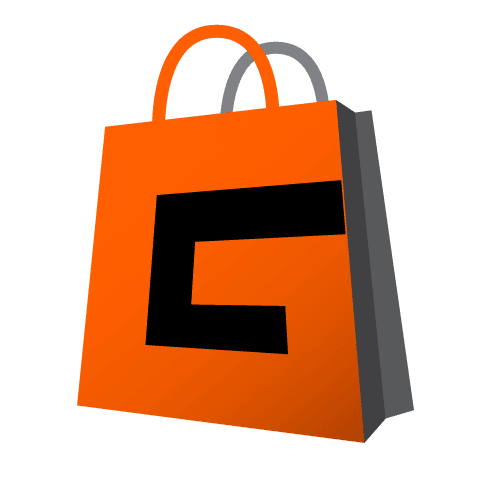A website’s homepage is the virtual front door to any business or brand. It’s the first point of contact and sets the tone for the browsing experience. The design of the homepage plays a significant role in influencing a visitor’s decision to explore further. Knowing the essential sections to make a homepage great is crucial for a strong online presence.
The key to a successful homepage lies in its ability to communicate, engage visitors immediately, and guide them effortlessly toward their goals, whether learning more about your services, purchasing, or getting in touch. In the following sections, we will delve into the indispensable elements of a homepage, from the hero section that captures attention to the footer that houses important logistical details. Each plays a pivotal role in enhancing the user experience and fostering conversions.
Hero Section
Defining the Hero Section
The hero section is often the first thing visitors see upon landing on a homepage, making it one of the most critical components of web design. This section is typically a large, visually striking area at the top of the page, featuring a compelling headline, an engaging tagline or brief description, and a clear call-to-action (CTA). Its primary purpose is to capture the visitor’s attention and succinctly convey the brand or product’s core message or value proposition.
Key Elements of an Effective Hero Section
- Compelling Headline: The headline should grab visitors’ attention and make them want to learn more. It’s often the make-or-break factor in keeping a visitor engaged.
- Supporting Tagline: A tagline or short description supports the headline by providing additional context or details about the product, service, or brand’s value proposition.
- Primary Call-to-Action (CTA): A well-defined CTA button guides visitors toward the next step, whether it’s signing up, making a purchase, or learning more. This CTA should be visually distinct and placed prominently within the hero section.
Importance of Visual Elements
The visual appeal of the hero section cannot be overstated. High-quality images, engaging videos, or dynamic animations can significantly enhance the section’s impact, making the site more memorable. These visual elements should complement the text, not overshadow it, and be aligned with the brand’s identity and message.
Visuals play a pivotal role in storytelling, enabling brands to create an emotional connection with visitors. Whether through a captivating image that reflects the brand’s mission or a short video that showcases the product in action, the hero section’s visual elements should immerse the visitor in the brand’s world from the moment they arrive.
Navigation
Role of Navigation in User Experience
Navigation is not just a feature of a website; it’s the backbone of user experience. A well-designed navigation menu allows visitors to quickly find what they’re looking for, making their journey through your site as seamless as possible. It acts as a map, guiding users to the most important sections without overwhelming them with choices. Intuitive navigation can significantly reduce bounce rates and improve overall satisfaction, encouraging visitors to stay longer and explore more deeply.
Best Practices for Designing Navigation
- Simplicity is Key: Keep the navigation menu simple and uncluttered. Limit the number of menu items to avoid overwhelming visitors. A rule of thumb is to have no more than seven items in the main navigation.
- Hierarchical Structure: Organize menu items in a logical order with a clear hierarchy. Use dropdowns sparingly to avoid confusion and ensure they are easy to click through.
- Mobile Responsiveness: With an increasing number of users accessing websites from mobile devices, ensuring your navigation is mobile-friendly is crucial. A responsive or adaptive design that changes based on the device size can provide a better user experience.
- Visibility: The navigation menu should be prominently placed where users expect to find it, typically at the top of the page or along the side. Consistency across pages helps with usability.
Examples of Innovative Navigation Layouts
Some websites break the traditional navigation mold with creative layouts that still prioritize usability. For instance, a full-screen navigation overlay can provide an immersive experience for sites with minimal content, while a fixed sidebar navigation works well for content-heavy sites, offering easy access to different sections without requiring users to scroll back to the top.
About Us Section
Significance of Storytelling in Building Brand Trust
The About Us section is more than a background story of your business; it’s an opportunity to connect with your audience on a personal level. Storytelling in this section can significantly enhance brand trust and loyalty by showcasing the people behind the brand and the values that drive them. A compelling narrative that reflects your brand’s journey, mission, and vision can resonate deeply with visitors, turning them into advocates for your brand.
Tips for Crafting an Engaging About Us Narrative
- Be Authentic: Authenticity is key in storytelling. Share genuine stories about your brand’s challenges, successes, and lessons learned. Authenticity fosters trust and relatability.
- Show, Don’t Just Tell: Use visuals like photos, videos, and infographics to complement your narrative. Showing your team in action or your products being made can add depth to your story.
- Include Social Proof: Incorporating elements of social proof such as customer testimonials, awards, or press mentions in your About Us section can further validate your brand’s credibility and success.
Incorporating social proof within the narrative or as a separate showcase can significantly bolster your brand’s credibility. Whether it’s through customer testimonials, partnerships, awards, or media mentions, these elements serve as external validation of your brand’s reliability and quality. Strategically placing social proof can reinforce the message that others trust and value your brand, encouraging new visitors to do the same.
Services or Product Overview
Showcasing Core Offerings
A homepage should clearly and concisely highlight your core services or products. This section is your chance to communicate what you offer and how it benefits your target audience. Use clear, jargon-free language that speaks directly to the visitor’s needs and challenges. Including a brief overview of each offering with links to detailed pages can help visitors quickly understand your range of services or products.
Balance Between Informative and Persuasive Content
While it’s important to be informative, your services or product section should also persuade visitors to take the next step. Use compelling copy that emphasizes the benefits of your offerings, not just their features. Highlight how your services or products solve problems or improve lives, making it clear why a visitor should choose you over competitors.
Utilizing High-Quality Visuals
Visuals play a critical role in this section. High-quality images, infographics, or short videos can help visitors visualize your offerings and see the tangible benefits. Ensure that visuals are relevant and enhance the textual content rather than serving as mere decoration. For products, consider 360-degree views or videos that show the product in action. For services, visuals that depict successful outcomes or satisfied customers can be very effective.
Testimonials and Reviews
The Impact of Social Proof on Purchasing Decisions
Testimonials and reviews are powerful forms of social proof that can significantly influence a visitor’s purchasing decision. Seeing positive feedback from other customers adds credibility to your offerings and can help alleviate any hesitations a new visitor might have. This section should feature authentic testimonials that reflect a range of experiences and outcomes, providing prospective customers with relatable success stories.
Strategies for Presenting Testimonials Authentically
- Variety and Authenticity: Include a variety of testimonials that cover different aspects of your service or product. Authenticity is key, so ensure that the testimonials are genuine and relatable.
- Use of Multimedia: Whenever possible, incorporate video testimonials or audio clips. Multimedia testimonials can be more engaging and convey emotion more effectively than text alone.
- Dynamic Elements: Consider adding a dynamic element to this section, such as a sliding gallery or a testimonial carousel. This can make the testimonial section more interactive and engaging.
Call to Action (CTA) Sections
The Psychology Behind Effective CTAs
Calls to action are crucial for guiding visitors toward a desired outcome, whether it’s making a purchase, signing up for a newsletter, or contacting your business. An effective CTA taps into the visitor’s interest and curiosity, offering them a clear next step. The psychology behind CTAs involves creating a sense of urgency or excitement, making the visitor feel that acting now is in their best interest.
Tips for Creating Compelling CTAs
- Clear and Concise Language: Use action-oriented language that clearly states what the visitor will get by clicking. Avoid vague phrases and focus on verbs that encourage action.
- Visibility and Design: CTAs should stand out visually from the rest of the page without being jarring. Use colors, fonts, and sizes that draw attention while fitting the overall design aesthetic.
- Strategic Placement: Place CTAs in logical spots where visitors are most likely to be convinced to take action, such as after a compelling section about your services or alongside impactful testimonials.
Placement and Design Considerations
The placement and design of your CTAs can greatly affect their effectiveness. Positioning CTAs above the fold ensures visibility, but also consider placing them at various points throughout the homepage where they feel most relevant and compelling. Testing different placements and designs can help identify what works best for engaging your specific audience.
Footer
Elements to Include in the Footer
The footer of a homepage is like the foundation of a building—it holds essential information that supports the rest of the site. This section typically includes:
- Contact Information: A must-have in the footer, making it easy for visitors to find ways to get in touch with you.
- Navigation Links: Including a simplified navigation menu in the footer can help visitors continue exploring your site without needing to scroll all the way back to the top.
- Social Media Links: Encourage visitors to connect with your brand on social media by including icons that link to your profiles.
- Newsletter Signup: A footer is a great place for a newsletter signup form, allowing interested visitors to stay informed about your brand.
- Legal Information: Privacy policies, terms and conditions, and copyright notices are often found in the footer, providing transparency and building trust.
Legal Information and Accessibility Features
It’s important to include legal information like privacy policies, terms of service, and copyright notices to comply with laws and regulations. Additionally, accessibility features such as a link to an accessibility statement or tools that enhance the site’s usability for people with disabilities can demonstrate your commitment to inclusivity.
Designing a Footer That Complements the Overall Homepage Design
While the footer might seem like an afterthought, its design should harmonize with the rest of your homepage. A well-designed footer can subtly reinforce your brand identity and leave a lasting impression. Use consistent colors, fonts, and styles that reflect the rest of your site. Consider the footer as an opportunity to reiterate your brand’s message or values in a concise and impactful way.
Conclusion
Creating a compelling homepage is both an art and a science. It requires a strategic blend of engaging content, intuitive navigation, and aesthetically pleasing design elements that align with your brand identity. By incorporating the essential sections discussed—ranging from an attention-grabbing hero section and intuitive navigation to engaging About Us narratives, clear service or product overviews, authentic testimonials, strategic calls to action, and a comprehensive footer—you lay the groundwork for a homepage that not only captivates but converts.
Remember, the key to a successful homepage is not just in including these sections but in continuously testing and refining them based on user feedback and analytics. What works today might need adjustment tomorrow, so stay flexible and responsive to the evolving needs of your audience. With these principles in mind, you’re well-equipped to create a homepage that stands out in the digital landscape, inviting visitors to explore further and connect with your brand on a deeper level.
